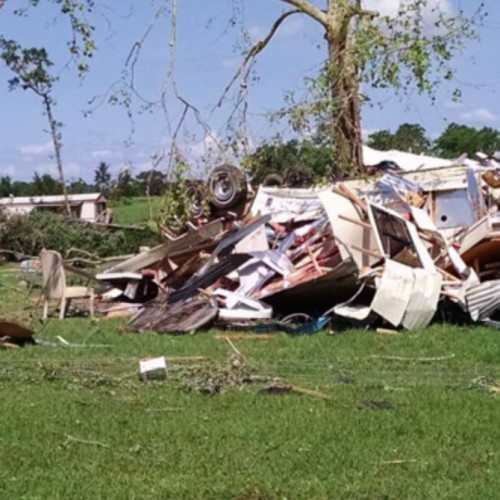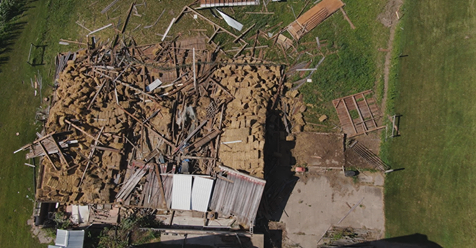TULSA, Okla. (KTUL) —
That ringing in your ear isn’t from tornado sirens, but rather the question being asked over and over, ‘Why didn’t they go off?’
“I want to explain our protocols on activating our warning system,” said Roger Jolliff, Director of the Tulsa Area Emergency Management Agency, the place where they hit the button to sound the sirens.
“At 1:25 a.m. the National Weather Service issued a tornado warning,” he said.
As soon as that happened, he called the National Weather Service to confirm.
“This is at 1:10,” said Mike Teague of the National Weather Service, pointing to a green mass in the center of his computer screen that would become the tornado. Moving southeast at 55 mph it didn’t have the regular calling card of a soon to be twister.
“They’re not formed in what we think of in a traditional manner, they don’t come from supercell thunderstorms, rotating and producing large tornadoes, and everybody gets to see them and they’re aware of them,” he said.
So at 1:10 its at the outskirts of the city, essentially in stealth mode as it creeps closer to midtown.
“When the factors just aren’t there to give you any clue leading up to that, it’s really hard,” Teague said.
At 1:18…
“Now all of a sudden,” he says, pointing to the first indication that a twister is forming, and the time that it’s believed it began to cause destruction.
“It happened really, really fast,” Teague said.
So fast, that by the time the National Weather Service issued the tornado warning at 1:25, it appears it had done its damage along 41st Street.
“Yeah, yeah that’s the way it looks, that’s the way it looks,” said Teague.
Which brings us back to the folks in charge of the sirens.
“To have warned, we would have been warning after the fact which would have not been the right thing to do,” said Jolliff.
The incident is both an eye opener and a reminder that despite the latest technology, Mother Nature continues to hold the upper hand.
“If you work here you understand, sometimes, sometimes, I’ll use the word failure, is just part of what’s built in to the process. You know you don’t get the high temperature right everyday, you don’t get the low temperature right everyday, you don’t get the, the rainfall prediction right everyday. Even though this is much more important, it’s all part of that,” said Teague.
by Burt Mummolo
August 7, 2017



